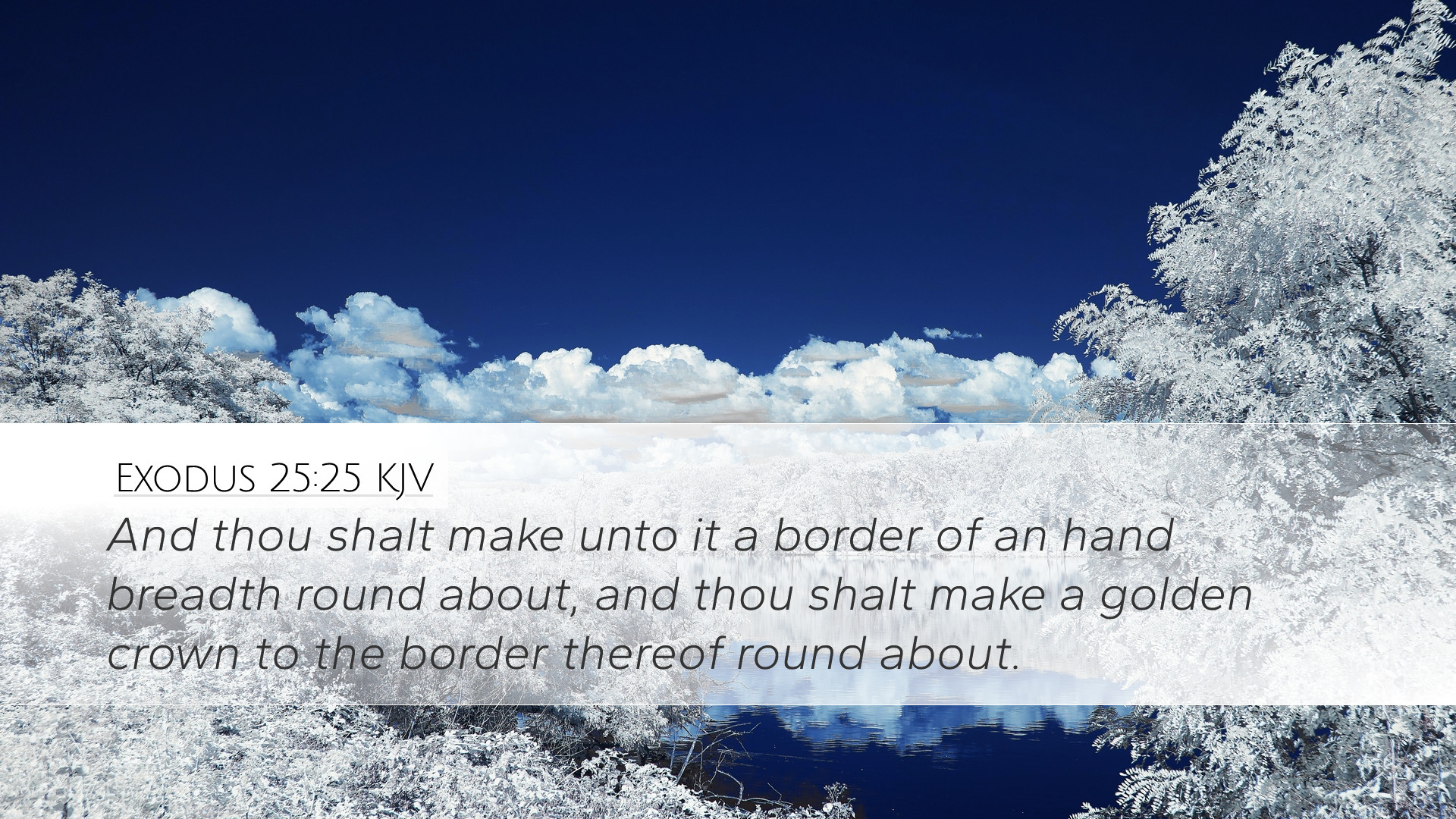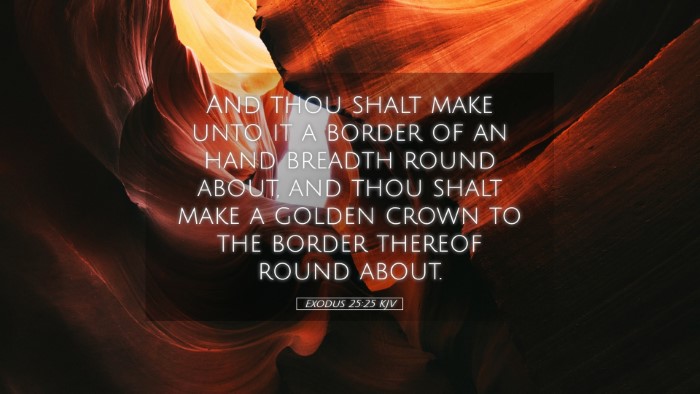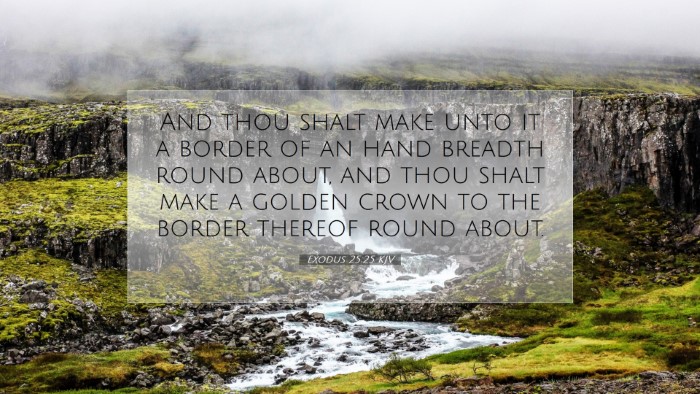Commentary on Exodus 25:25
Verse: Exodus 25:25 - "And thou shalt make unto it a border of an hand breadth round about, and thou shalt make a golden crown to the border thereof round about."
Introduction
This verse appears within the detailed instructions given to Moses regarding the construction of the Tabernacle. The design of this sacred space is pivotal to understanding the nature of God’s presence with His people. This commentary draws insights from various public domain sources to enhance comprehension.
General Observations
The instruction to create a border with a golden crown signifies not only ornate beauty but also a divine appointment. This reflects the seriousness of the task at hand and emphasizes the necessity of reverence in approaching God.
Insights from Matthew Henry
Matthew Henry emphasizes the symbolic significance of the border. He notes that the handbreadth serves as a measure of distinction and represents the reliance of the people on God’s provision. The golden crown illustrates the glory and kingship of God, indicating that everything in the sanctuary is adorned with the utmost regard for His majesty.
Insights from Albert Barnes
Albert Barnes highlights the practical aspects of this verse. He explains that the specific dimensions of the crown serve to ensure a measured approach to God’s sanctuary. The handbreadth corresponds to a human measure while the use of gold signifies what is sacred and valuable. It underlines God’s desire for excellence and beauty in worship.
Insights from Adam Clarke
Adam Clarke focuses on the theological implications of the crown and its border. He views the crown as a symbol of authority, affirming that the Tabernacle represents God’s rule over His people. Clarke also notes that the gold symbolizes purity and the divine nature of the covenant relationship established between God and Israel.
Theological Reflections
The directive for a crown around the Tabernacle border can be seen as an invitation for the people to approach God with an established sense of dignity and reverence. It illustrates the balance between God’s majesty and His closeness to His people. The beauty of the Tabernacle signifies the worthiness of God’s holiness.
Implications for Worship
This verse calls for reflection on how contemporary worship spaces are constructed and maintained. Just as the Israelites were instructed to prepare a sacred space, today’s congregations must approach the design and atmosphere of worship with intentionality, ensuring it reflects God’s glory.
Practical Applications
- Attention to Detail: Leaders should strive for excellence in all aspects of worship.
- Symbolism: Recognizing the power of symbols in worship can enhance the understanding of God’s presence.
- Holiness: The Tabernacle’s design reminds us to approach God with reverence and respect.
- Community: In engaging with worship spaces, consider the collective responsibility of maintaining a space that honors God.
Conclusion
Exodus 25:25 serves as a microcosm of the larger narrative of the Israelites’ relationship with God. Through the instruction of the border and crown, we are reminded of God’s majesty and the sacredness of worship. The insights provided from Matthew Henry, Albert Barnes, and Adam Clarke collectively encourage further contemplation on how we honor God in our worship environments.


